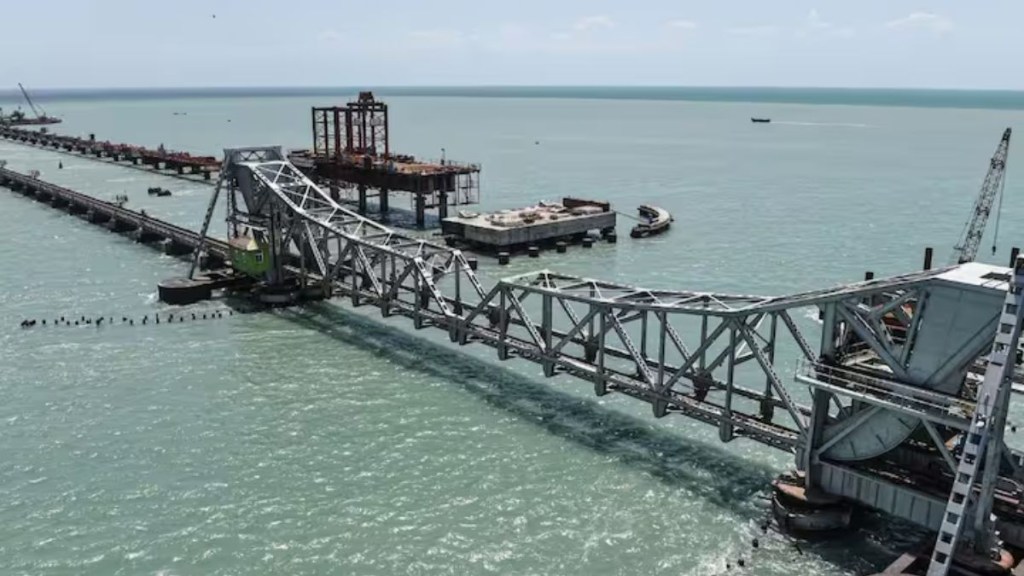The Railway Board Chairperson, Jaya Varma Sinha, on Thursday (February 22) informed that the India’s inaugural vertical-lift bridge, the Pamban railway bridge, connecting the mainland to Rameswaram Island, is nearing operational readiness.
The announcement comes following her visit to Rameswaram to assess the project’s progress. In a conversation with PTUI, Varma said the reconstruction is progressing well, and we anticipate resuming services very soon.
Moreover, she commended the dedicated efforts of the team in overcoming numerous challenges associated with constructing a first-of-its-kind vertical-lift bridge over the turbulent sea.
Rail operations on Pamban bridge
Train services between Mandapam on the mainland and Rameswaram Island were halted on December 23, 2022, when the existing rail bridge, constructed in 1913, was deemed unsafe.
A Southern Railway official explained, “Due to the aging and safety concerns of the old Pamban bridge, the necessity for a new bridge became imperative.” Trains presently terminate at Mandapam, and travelers rely on road routes to reach Rameswaram.
New Pamban bridge
The foundation stone for the new bridge, parallel to the old one, was laid by Prime Minister Narendra Modi in November 2019, and construction commenced in February 2020 under Rail Vikas Nigam Limited (RVNL). Originally slated for completion by December 2021, the project faced delays due to the COVID-19 pandemic.
The Southern Railway highlighted that the 2.05-km-long bridge will enable higher-speed train operations and enhance connectivity between mainland India and Rameswaram Island. Prior to the construction of a road bridge in 1988, train services were the sole link between Mandapam and Rameswaram Island.
Difference between old and new Pamban bridge
Regarding the old bridge, the Southern Railway spokesperson noted its limited vertical clearance, resulting in sea water splashing on the girders. The new bridge, designed for double lines, features 100 spans of 18.3 m and one navigational span of 63 m, positioned 3.0 m higher than the existing bridge with a navigational air clearance of 22.0 m above sea level.
The bridge incorporates electro-mechanical control systems, aligning with the railways’ electrification plan, and employs advanced technologies such as stainless steel reinforcement, composite sleepers, and a long-life painting system.
